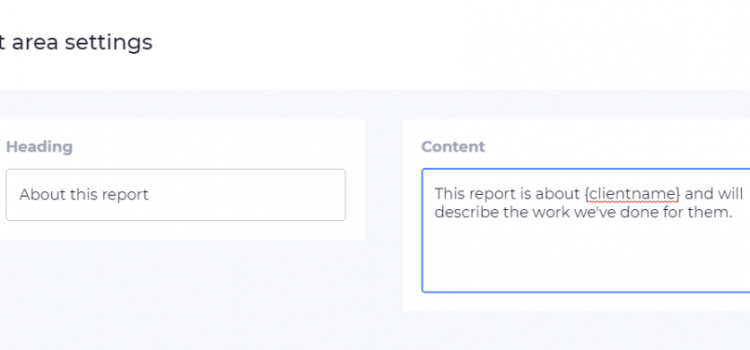Managing eLearning is a complicated and ongoing task, leading many organisations to hire staff dedicated solely to this function.
With responsibilities including managing learners, eLearning courses, enrolments, communications and reports, to name a few, the administrative burden on staff responsible for eLearning is large.
We’re about to release our brand new eLearning platform, Astute. Throughout its development, we’ve listened to client feedback to come up with Astute solutions to some of the most common eLearning pains, including:
1. User administration
Being able to monitor results is a key benefit of eLearning, but being able to correlate results with learners requires each learner to be allocated a unique username.
While eLearning platforms typically allow users to be added and deleted one by one, as organisations get larger this becomes an increasingly complicated way to manage users.
Staff turnover also means that the list of required users evolves constantly, making keeping an eLearning platform’s users up to date an administrative nightmare, consuming time whenever someone leaves or joins the organisation.
Our Astute solution: With Astute, use Active Directory single sign on automation or synchronise users with your existing systems using batch CSV import to painlessly keep your eLearning platform’s user list up to date.
2. User enrolment
Once learners are registered, they need to be enrolled onto the right courses, which may seem straightforward at first glance: find the user, select the courses to enrol them on, and enrol them.
Imagine repeating that process to enrol fifty users onto a number of courses specific to each of them, though, and the time involved grows rapidly.
When it comes to a global corporation with thousands of learners and a catalogue full of available courses, it really gets out of hand.
Many eLearning platforms are designed with only a straightforward individual user enrolment in mind, which simply doesn’t scale efficiently to the demands of a larger organisation.
Our Astute solution: Astute has a number of bulk management features for course enrolments and re-enrolments. Enrol users based on name, team, function, or any custom field of your choice in bulk to take the pain out of enrolments, no matter how many learners and courses you’re dealing with.
3. Communication with learners
In an ideal world, once users are created and enrolled onto relevant courses, administrators would be able to simply sit back and wait for them to complete the courses.
In practise, each time a learner is enrolled on a course a number of associated communications are required, such as informing the learner of the enrolment, their log in and access details, confirming completion of the course, and notifying managers of course completions.
Multiply all of these requirements by the amount of users involved and it quickly becomes a huge task, requiring constant communication with learners, managers and relevant stakeholders.
Our Astute solution: Astute’s in depth triggering system means any action can automatically create a reaction, specified by you. For example, when courses are enrolled on, create a trigger to email the user automatically, or when courses are completed, notify specific users – there are limitless opportunities to create triggers to automate communication throughout the user journey.
4. Chasing learners to complete courses
After learners have been enrolled and sent details of how to log in and complete their courses, it may seem like a matter of time before course completion rates reach 100%.
However, being overwhelmed with emails and tasks often means that emails about eLearning enrolments can often get lost, saved for later and forgotten about, or simply ignored.
eLearning platforms typically offer the ability to view users yet to complete a course, enabling an administrator to remind them, but this becomes yet another time consuming ongoing task.
Our Astute solution: Astute enables you to setup automated chaser emails for incomplete courses, as well as escalation reports to local champions or the person responsible for the learner in question – all customisable by the administrator.
5. Analysing data
One of the most valuable benefits of eLearning is the vast amount of data generated about each learner and their interactions with each course.
Utilised properly, this data can help businesses to identify areas of performance in need of attention to improve results, as well as identify which employees are outperforming their colleagues.
Most eLearning platforms offer the ability to view data generated, but to make meaningful, actionable sense of the data requires analytical skills.
Our Astute solution: Inbuilt dashboard summaries provide an overview of eLearning performance at an organisation-wide level, which can be drilled into to explore data at a course or learner level. Numerous included report templates highlight users based on course completion, team, and more, or use the powerful custom report builder for specific reports. Best of all, reports can be delivered automatically at scheduled intervals to the inboxes of administrators and key stakeholders in Excel, Word or PDF format.
6. Managing refresher schedules
It is good practise for employees to take regular annual refresher training, especially in critical subjects such as compliance.
Organisations typically manage this by setting an arbitrary annual date by which all employees must complete eLearning courses. Not only does this create extra administrative work, with manual re-enrolments every year, it also means staff who have joined in the interim have to take courses twice in less than a year.
Our Astute solution: Astute’s built in auto enrolment features can be based on a user’s individual course completion date, meaning that their re-enrolment date depends on when they last completed the course. Once set up, this runs automatically without requiring any intervention from your administrator.
We’ve designed Astute to take the pain out of eLearning administration, with many features aimed at making life easier for eLearning administrators. Release is imminent and you can be one of the first to see Astute in action: book a demo of Astute today.

